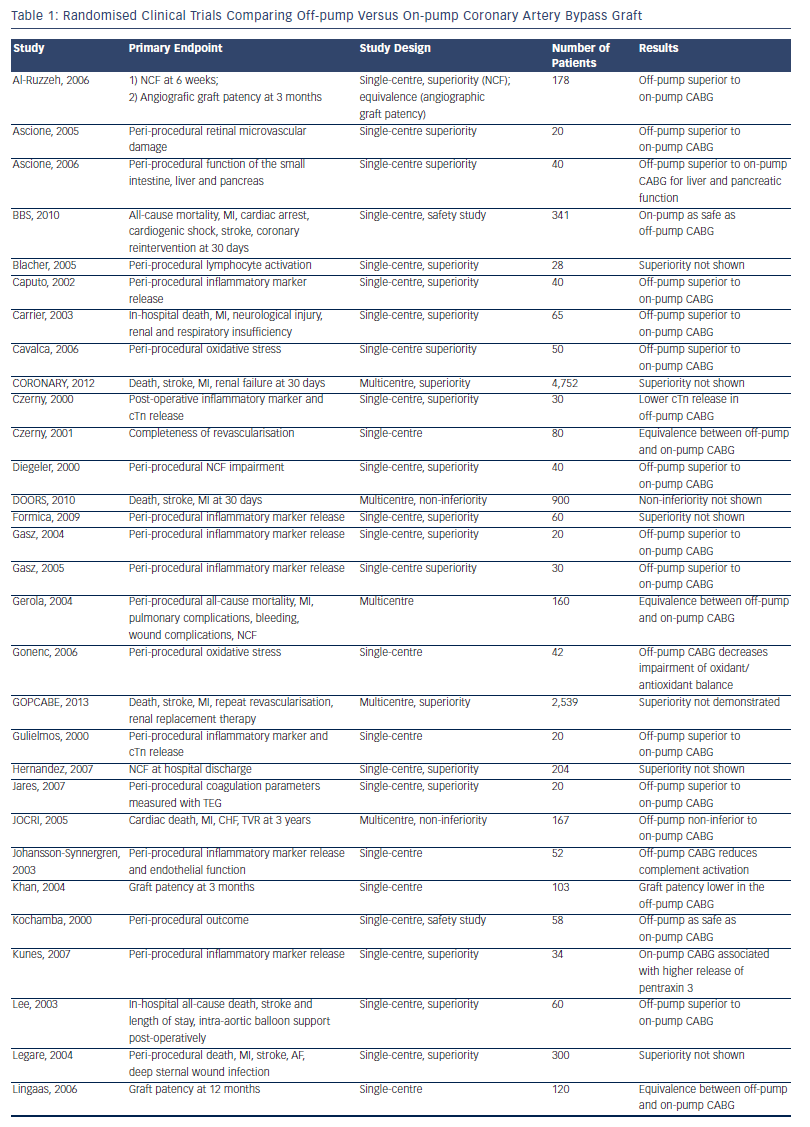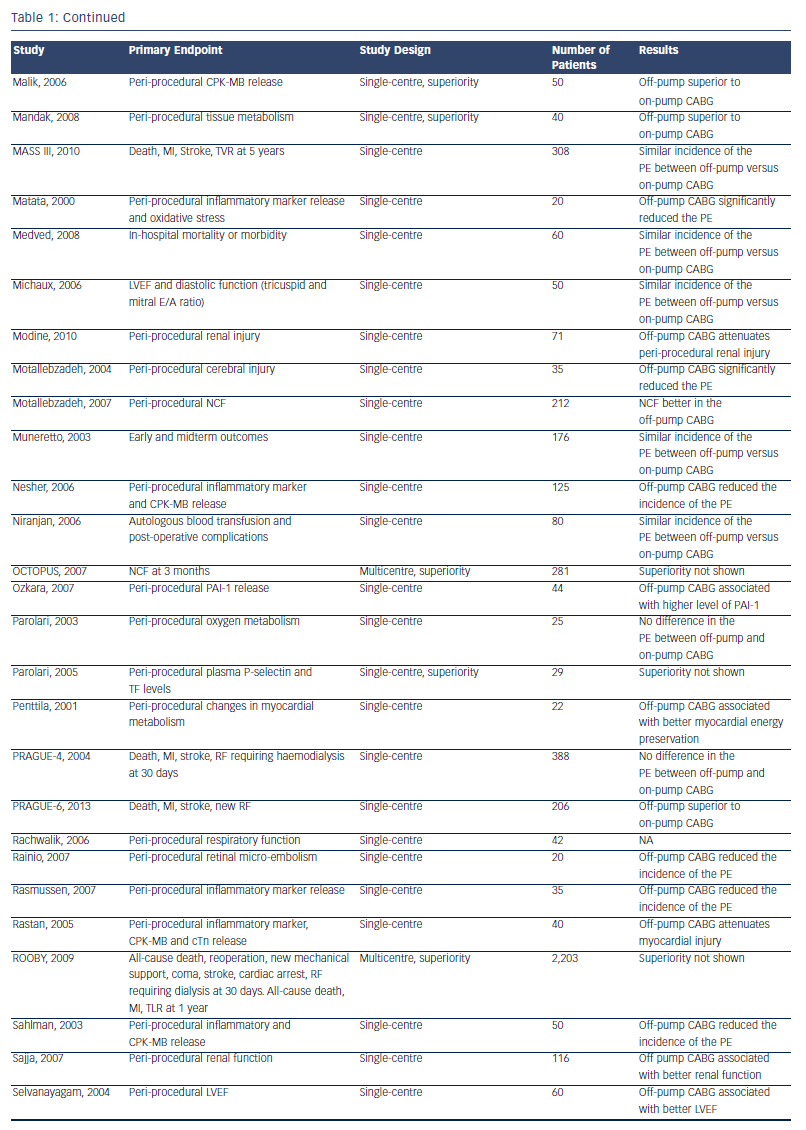The Value of Off-pump Coronary Artery Bypass Graft in Reducing the Risk of Stroke
The observation that atherosclerosis of the ascending aorta is a major determinant of stroke after CABG has led some inv
 estigators to advocate the use of off-pump CABG to reduce surgical manipulation of the aorta. Several studies have compared clinical outcomes of patients treated with on-pump versus off-pump CABG, and results have been controversial. In general, observational studies have consistently suggested an association between off-pump CABG and stroke reduction, but this association has not been confirmed in several randomised controlled trials (RCTs).
estigators to advocate the use of off-pump CABG to reduce surgical manipulation of the aorta. Several studies have compared clinical outcomes of patients treated with on-pump versus off-pump CABG, and results have been controversial. In general, observational studies have consistently suggested an association between off-pump CABG and stroke reduction, but this association has not been confirmed in several randomised controlled trials (RCTs).
Specifically, in a propensity matched analysis involving more than 42,000 patients, there was a 35 % reduction in the risk of stroke in patients treated with off-pump CABG compared with those treated with on-pump CABG.27 In sharp contrast, in the recently published CABG Off or On Pump Revascularization Study (CORONARY), no significant difference in stroke rates was apparent between patients treated with on-pump CABG versus those treated with off-pump CABG. Similar results were apparent in two other recently published RCTs: German Off-Pump Coronary Artery Bypass Grafting in Elderly Patients (GOPCABE)28 trial and PRAGUE 6 trial.29 Several other RCTs comparing off-pump versus on-pump CABG have been performed, and results are summarised in Table 1.
In order to clarify relative safety and efficacy of off-pump versus on-pump CABG, several meta-analyses have been performed, but results have been controversial too. In particular, in the meta-analysis by Afilalo et al.,30 including 59 RCTs with 8,961 patients, there was a significantly lower 30-day risk of stroke with off-pump CABG compared with on-pump CABG. In sharp contrast, in the broader meta-analysis by Moller et al.,31 including 86 RCTs with 10,716 patients, there was no significant difference in the risk of stroke at long-term follow-up. Evaluation of different timepoints, study selection and different methodology likely explain discrepancies. It should be noted that neither of these two metaanalyses included the CORONARY trial, which with 4,752 patients enrolled, is the largest RCT performed to date.
In the largest meta-analysis performed to date, including the CORONARY trial and analysing the risk of stroke in 22,279 patients, Palmerini et al. showed that patients treated with off-pump CABG had a significantly lower 30-day risk of stroke than patients treated with on-pump CABG. However, when the analyses were restricted to high quality studies, studies with either >100 or >1,000 patients, or to studies with definition or adjudication of stroke by a clinical events committee, the precision of the point estimate was reduced, suggesting that the overall result may have been affected by studies with substantial risk of bias. Most notably, the odds ratio (95 % confidence interval [CI]) for stroke in trials of off-pump versus on-pump CABG enrolling >1,000 patients was 1.10 (0.67, 1.72).
These data therefore do not clearly support the hypothesis of a significant reduction in the risk of stroke with routine implementation of off-pump CABG compared with on-pump CABG. With an absolute risk reduction of 0.1 % and a relative risk reduction of 11.0 % with off-pump CABG versus on-pump CABG observed in the CORONARY trial, more than 300,000 patients would be necessary to assess whether off-pump CABG truly reduces the risk of stroke compared with on-pump CABG with test power of 80 % and alpha (α)=0.05.